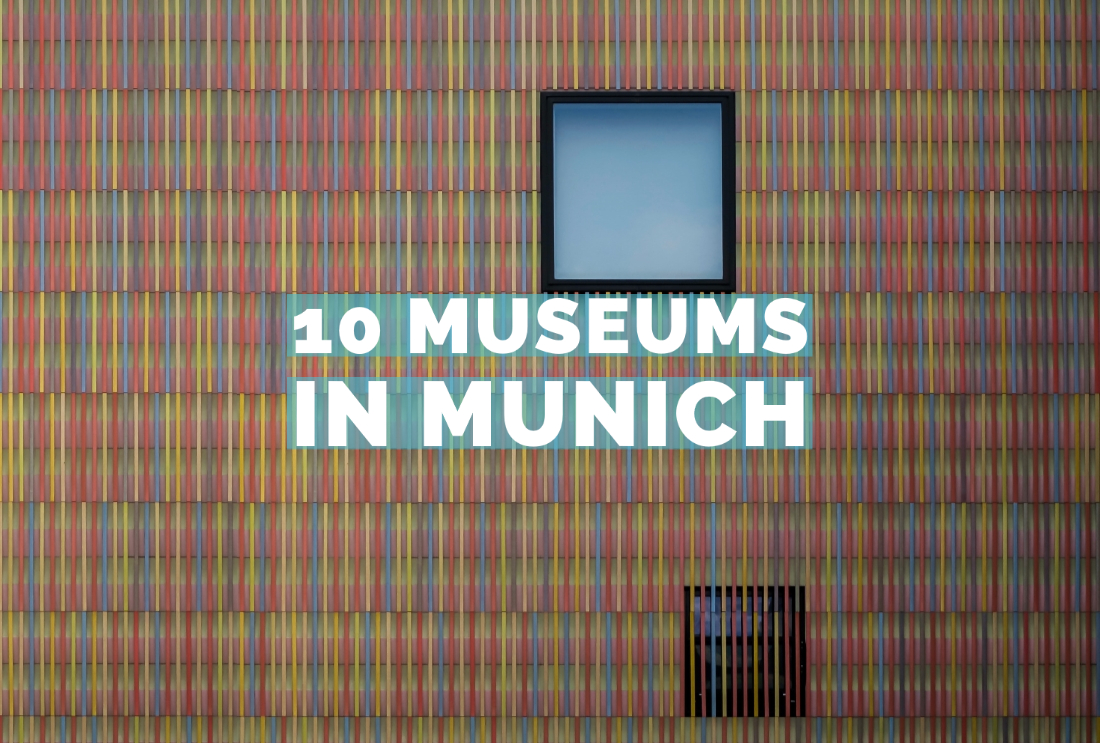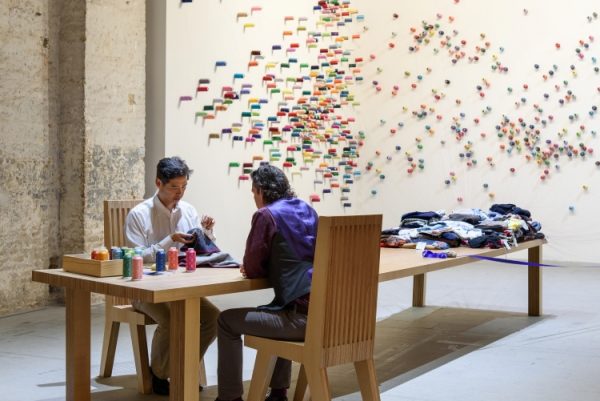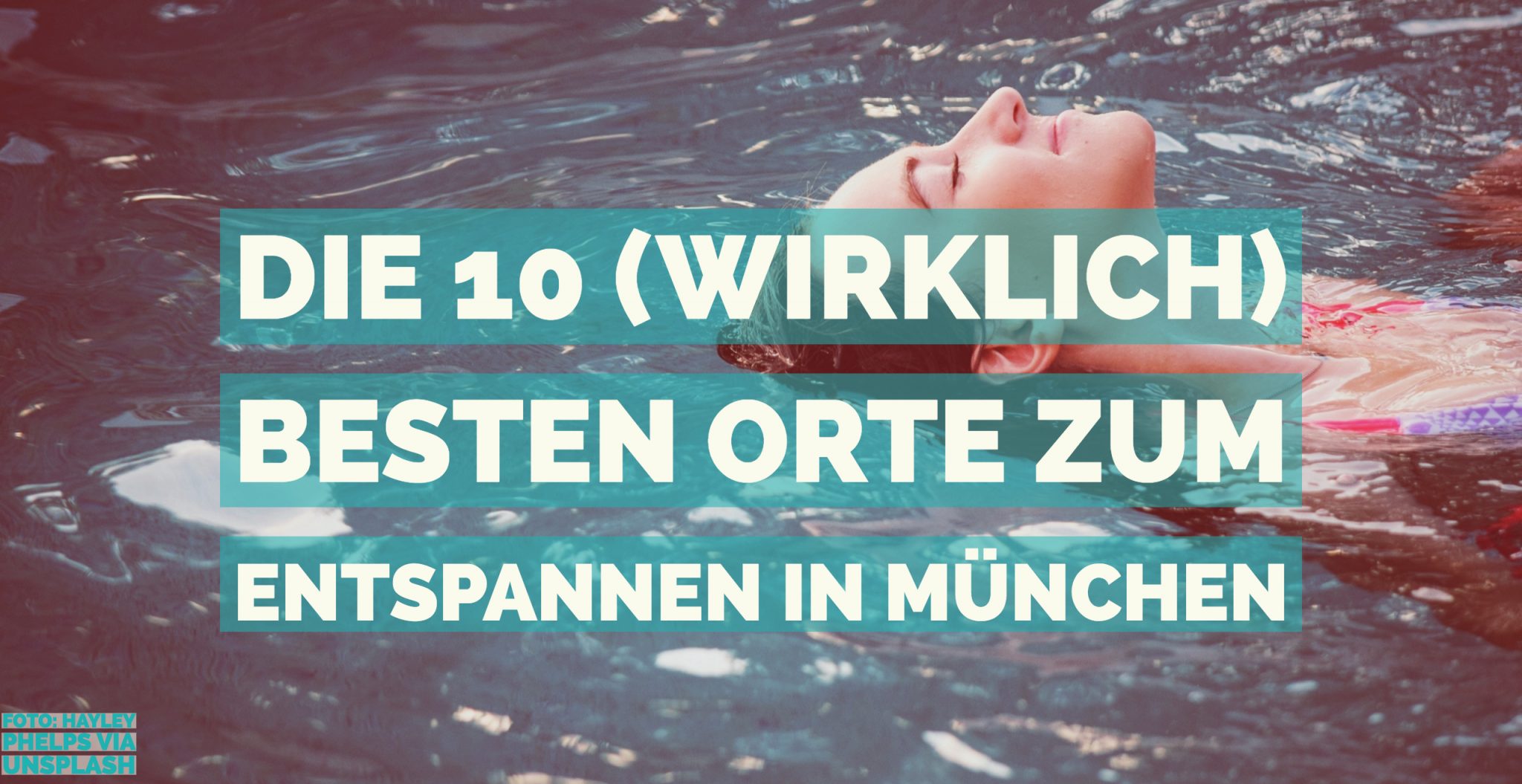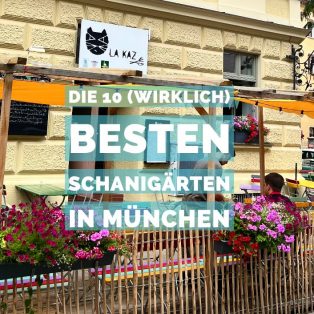
Aktuell, Die 10 wirklich besten..., Stadt
10 Museums you should visit in Munich
- Münchens Startup-Szene: Im Gespräch mit Prof. Dr. Helmut Schönenberger - 25. August 2021
- Welcome to Isar Valley: Warum ist München bei IT-Firmen so beliebt? - 4. August 2021
- 10 Museums you should visit in Munich - 14. Juli 2021
Museums connect a city to different times. For Munich, these times lie either in the past or in the future. They are written on long scrolls of Egyptian papyrus or are sprayed onto brick walls. They are destroyed, restored or painted over. The shining antiques of the Glyptothek reflect the heights of Western civilization, while the black and white of the NS-Dokumentationszentrum stencils show its barbarism. All good museums excite and educate. But what differentiates a good museum from a great museum is only one thing: it makes you stop and think.
The choices of time travel in Munich are vast. This list picks out ten museums in Munich that are guaranteed to satisfy your curiosity:
Die Pinakotheken
In name and content, the Alte Pinakothek, the Neue Pinakothek and the Pinakothek der Moderne combine the old, the new and the modern. From Albrecht Dürer’s dark gothic portraits, to the five bright sunflowers of Vincent Van Gogh to Salvador Dali’s gloomy dreams: The three Pinakotheken are the best known museums in Munich. They offer an art collection that can engage you for years. For example, the Alte Pinakothek has a collection of 700 paintings alone. With their wide, green lawns full of students in the summer and late-night tango dancers in the halls of the Pinakothek der Moderne, they create a district of art and culture of their own.
The Neue Pinakothek is currently closed but selected works are shown at the Alte Pinakothek. In place of the Neue Pinakothek, and if you still yearn for art after three separate exhibitions you can visit Museum Brandhorst. Museum Brandhorst exhibits contemporary art from Warhol to Twombly to now.
Good to know: Tickets for the Pinakotheken are only 1€ on Sundays.
Die Pinakotheken, Barer Str. 27.
Alte Pinakothek: Di./Mi.: 10:00-20:30; Do./So.:10:00-18:00; Tickets: 8,80€
Neue Pinakothek: Renovation. Selection of the exhibition showed at “Alte Pinakothek”.
Pinakothek der Moderne: Di./Mi.: 10:00-18:00; Do.:10:00-20:00; Fri. 10:00-18:00; Tickets: 8,80€
Museum Brandhorst: 10:00-18:00; Do.:10:00-20:00; Fri. 10:00-18:00; Tickets: 6,60€
Museum Villa Stuck
Neoclassical exterior, Art Nouveau interior. Museum Villa Stuck is known for surprising guests with modern concepts of art. Currently, an exhibition of 李明維 (Lee Mingwei) makes art participative. Cloth menders, dancers, singers , story-tellers and …. you create art which explores the principle of 禮 (Li), Confucianism’s thoughts on hospitality and ritual. The theme of hospitality is incredibly suited for Museum Villa Stuck. Not just because of its friendly Art Nouveau interior, but also because it frequently hosts exhibitions of participatory art. At Museum Villa Stuck, artists create settings or situations for interaction.
Museum Villa Stuck, Prinzregentenstraße 60
Opening Hours: Di.-So.: 11:00-18:00; Tickets: 9€
Staatliches Museum Ägyptischer Kunst
Contrary to belief, the lovingly abbreviated SMÄK, the “Staatliches Museum Ägyptischer Kunst” does not host Ikea furniture, but Egyptian art. With its spacious, modern halls and the long, pyramid-like corridors, the architecture of the museum itself is, metaphorically, breath-taking. Long rolls of papyrus, sarcophagi, etched in obelisks and cracked sculptures tell you the history of Egypt from the Intermediary period to Ptolomaic Egypt. In recent years, much of this collection has been digitalised and descriptions, models and highlighters were made to guide you through the story of ancient Egypt.
Staatliches Museum Ägyptischer Kunst, Gabelsbergerstraße 35
Opening Hours: Di.: 10:00-20:00; Mi-So.: 10:00-18:00; Tickets: 7€, Sunday 1€
Lenbachhaus
On the brink of World War One “Der Blaue Reiter” (The Blue Rider) was an art collective from Munich. It was most prominently shaped by the Russian emigrant Wassily Kandinsky and the Munich artist Franz Marc. Nowadays, their biggest collection resides in museums whose walls change colour: the Lenbachhaus. The Lenbachhaus tries to act purposefully with its possession, since many projects support disadvantaged groups or senior citizens. It follows the Blaue Reiter credo: “The whole of a work, called art, does not know borders or nations, but only humanity”.
Lenbachhaus, Luisenstraße 33
Opening Hours: Di.-So.:10:00-18:00; Do.: 10:00-20:00; Tickets: 10€
Jüdisches Museum
The Jewish Museum, located in the city centre, hosts about two large exhibitions on aspects of Jewish history and culture a year. During the Holocaust, much of Jewish cultural heritage had been robbed and destroyed. A current exhibition is about the historian Mordechai W. Bernstein, who roamed through post-war Germany to find these lost stories of Jewish history. This too is the mission of Jüdisches Museum: Jiddish texts, Jewish music and religious artefacts. A story about the 1700 years of Jewish life in Germany.
Jüdisches Museum, Sankt-Jakobs-Platz 16
Opening Hours: Di.-So.: 10:00–18:00 Uhr; Tickets: 6€
Museum of Urban and Contemporary Art
The museum for graffiti artists and muralists, from Banksy to Swoon. The Museum of Urban and Contemporary Art celebrates artists who had started their career on the fringes of illegality. Urban art is a fleeting art, waiting for someone else to paint it over or tear it down. MUCA, by giving it a stage rather than the blink of an eye, gives it the appreciation it deserves. Away from the murky side-streets, into the limelight.
Museum of Urban and Contemporary Art, Hotterstraße 12
Opening Hours: Mi.-Sa.: 10:00-20:00, So.:10:00-18:00; Tickets: 7,50€
Valentin-Karlstadt Musäum
The quirkiness is in the name. Karl Valentin and Liesl Karlstadt were two comedians from Munich who made fun of words and German culture. The small tower of the Valentin-Karlstadt Musäum, packed with kitsch and gag, is the most charming museum in Munich. It showcases the works and sketches of the two comedians such as: going to the photographer, buying records or adjusting a new desk. The early 20th century bits of Valentin and Karlstadt are still funny today. There are posters, graphics and silent movies too. Although German is therefore not required for a visit, a sense of humour unfortunately is.
Valentin Karlstadt Musäum, Tal 50
Opening Hours: Mo./Di.: 11:00-18:00; Do.-Su.: 11:00-18:00; Tickets: 3€
Deutsches Museum
An island of technology and German engineering. Deutsches Museum is Munich’s scientific museum. You can observe airplanes from the world wars, zeppelins, submarines, tanks, engines and an array of cars. When you leave, you leave with newly found knowledge. The curiosity of Deutsches Museum requires an island of its own.
Deutsches Museum, Museumsinsel 1
Opening Hours: 09:00-17:00; Tickets: 14€
NS-Dokumentationszentrum München
At the origin of the NSDAP, it’s headquarters which was called the “Brown House”, stands the NS-Dokumentationszentrum München. In Germany, the culture of remembrance is a term for the nationwide documentation of and the confrontation with its National Socialist past. The NS-Dokumentationszentrum was built in order to deal with this past. The interiors of the squared white building document the dark rise of Nazism and the stories of its countless victims.
NS-Dokumentationszentrum München, Max-Mannheimer-Platz 1
Opening Hours: Di.-So.: 10:00-19:00; Tickets: Free Entry
Glyptothek
In 1816, Ludwig I. built the Glyptothek to store his collection of antiques. Light floods the brick halls of the Glyptothek and is reflected off of famous sculptures, such as Old Drunkard or Barberini Faun. As the oldest public museum in Munich, the Glyptothek also hosts a variety of open air events, such as reenactions of greek theater or readings within its sunny patio. On Königsplatz, you can get lost in time.
Glyptothek, Königsplatz 3
Opening Hours: Di.-Mi.: 10:00-17:00; Do.: 10:00-20:00; Fr.-So.: 10:00-17:00; Tickets: 6€; Sunday 1€
Beitragsbild: Unsplash / Victor Garcia





No Comments